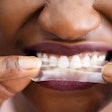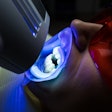Children with cleft lip and/or palate encounter different challenges throughout the course of their development. Both environmental and biological factors play a role and can affect speech, academic performance, and behavior. Research has shown varying influences, including the type of cleft, gender, and age, affecting outcomes.
The July 2012 issue of Cleft Palate-Craniofacial Journal reviews findings about individuals with cleft in three age groups: infancy/early development, school age, and adolescence/young adulthood (Vol. 49:4, pp. 387-396). The study examines behavioral, neuropsychosocial, and learning/achievement outcomes.
Each stage of development has its unique biological and psychological impacts, noted the study authors from the University of Iowa. The early years of development for a child with cleft include surgical repair of the cleft lip or palate, orthodontic treatment, and assessment of speech and other issues that might require intervention. Parent-child interactions and attachments can be affected both positively and negatively by the emotional stresses of these events.
When a child reaches school age, social skills, self-control, and other behavioral regulation come into play. Parents and teachers have reported significantly higher behavior problems in children with clefts. The occurrence of reading difficulties and learning disabilities is high.
The increased emphasis during adolescence on speech and appearance can bring a decrease in self-confidence for the child with cleft. Rates of learning disabilities decline during this age, however. Studies show that children with a realistic self-assessment who actively develop social skills fare better.
The environmental effects of cleft lip and/or palate are rather transparent, the researchers noted. Children with clefts can have facial differences and speech problems that elicit a response from others, which can create issues in self-esteem and emotional development for the child with cleft. Some characteristics of clefts also have a biological basis.
Patterns of specific strengths and weaknesses have been found to be associated with clefts, according to the study. Delayed speech and language development, reading deficits, memory problems, and learning disabilities have been linked to clefting, seemingly related to the neuropsychological deficits brought with cleft lip and palate.
Even after the physical aspects of a cleft lip and/or palate have been resolved, the neuropsychological deficits can persist, something that has only recently become accepted. Related academic and social-emotional problems are still present, and speech and language difficulties can persist into adulthood.



















